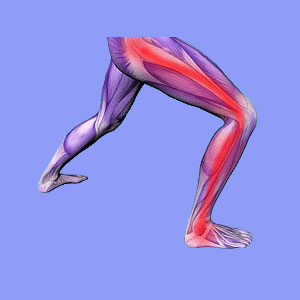
Are you suffering from sciatica or pseudo-sciatica? Most patients have no idea and neither do their doctors. In fact, most patients do not even know what pseudo-sciatica is or that it is far more commonplace than true spinally-motivated sciatica.
We have been working to educate people with chronic pain for more than 15 years, as well as providing advocacy services to improve diagnostic and treatment outcomes for people all around the globe. Despite all our efforts, we are still shocked how little people know when it comes to sciatica, so we continue to produce dialogs like this one in order to help patients to get up to speed on the facts of their conditions.
This important discussion focuses on the differences between sciatica and pseudo-sciatica. We will describe both varieties of symptoms, as well as explain why the majority of people reading this essay will indeed be suffering from pseudo-sciatica, instead of traditional spinally-motivated sciatica symptoms.
Sciatica or Pseudo-Sciatica? What’s the Difference?
Lets’ get back to basics here for a few moments for those who are not sure about the differences between these 2 symptom sets. Let’s make it clear that neither sciatica nor pseudo sciatica are diagnoses unto themselves. They are merely expressions of some underlying condition causing the pain and neurological symptomology. If there is any confusion about this fact, please read our essay titled sciatica is NOT a diagnosis.
Sciatica is also called spinal sciatica, since it occurs due to compression or chemical irritation of one or more nerve roots in the lower back region, specifically nerve roots L4, L5, S1, S2 and/or S3. Most commonly involved are L5 and S1, since these are located at the site of the most extreme degeneration in the normal human spine. In essence, if these nerve roots which form the sciatic nerve are affected in some way inside the spinal anatomy in the lower back, then sciatica might be the result.
Pseudo-sciatica describes an identical symptom set that might appear in every way to be spinal sciatica, but is not caused by compression or chemical irritation of the L4 through S3 nerve roots. Instead, there is another source of symptoms in existence that can cause compression of the spinal cord higher in the anatomy or compression and/or dysfunction of the fully formed sciatic nerve lower in the anatomy. There are many, many different types of pseudo-sciatica, making it far more commonplace than true spinally-motivated sciatica.
Spinal or Pseudo-Sciatica? Why Chronic Sciatica is Rare
Sciatica can certainly exist and might come from a variety of sources. Some of the most common origins of true sciatica include pathological herniated discs and severe osteoarthritis. Both of these conditions can narrow the diameter of the central spinal canal and reduce the patency of the neuroforaminal openings, potentially resulting in compression of one or more of the aforementioned nerve roots.
In less common cases, the central spinal canal and/or foraminal openings might suffer misalignments and reduction in patency due to other structural spinal issues, such as spondylolisthesis, changes in spinal lordosis or excessive facet joint osteophyte growth.
There are many reasons for sciatica to exist and these are all detailed fully in our essay covering the causes of sciatica. If you are interested in learning more about how and why true sciatica exists, then this is the right article for you.
Regardless of the true cause of sciatica symptoms, spinal causations virtually always take the blame and are often actively treated, including the use of surgical intervention. However most patients find that although they have been in treatment for an extended period of time and have often undergone several operations on their spine, their symptoms persist and form a chronic pattern. In some cases, the continuation is blamed on scar tissue formation in the spine, but in virtually every case, this is incorrect. The reality is that the symptoms never existed due to the spinal scapegoats they were blamed on and the treatment aimed at these conditions proved worthless since it was misdirected at a misdiagnosed source.
Sciatica or Pseudo-Sciatica? Most Likely Pseudo-Sciatica
Most people who suffer from chronic symptoms actually have pseudo-sciatica. The causes of this pseudo-sciatica vary greatly and can include structural, systemic and mindbody origins.
Sacroiliac joint pain can feel like sciatica and can even actually cause pseudo-sciatica. Piriformis syndrome can create a perfect mimic of sciatica. Both of these structural diagnoses are further hindered in accurate diagnosis due to a lack of definitive testing for causation.
Far more common than these sources include the epidemics of obesity and subsequent diabetes that now plague the developed world. Obesity and diabetes work together to create the perfect storm of poor health, with pseudo-sciatica being an extremely common manifestation.
However, the most common source of chronic and treatment-defiant sciatica symptoms remains the mindbody processes. Dr. John Sarno wrote about this occurrence decades ago and things have gotten much worse since then, with a majority of chronic symptoms being caused directly by the mindbody interactions and not at all from the scapegoat conditions which are mistakenly blamed for them. This and only this explains why so few patients find a cure for their sciatica… Correct this gigantic blunder and a cure is well within reach.





